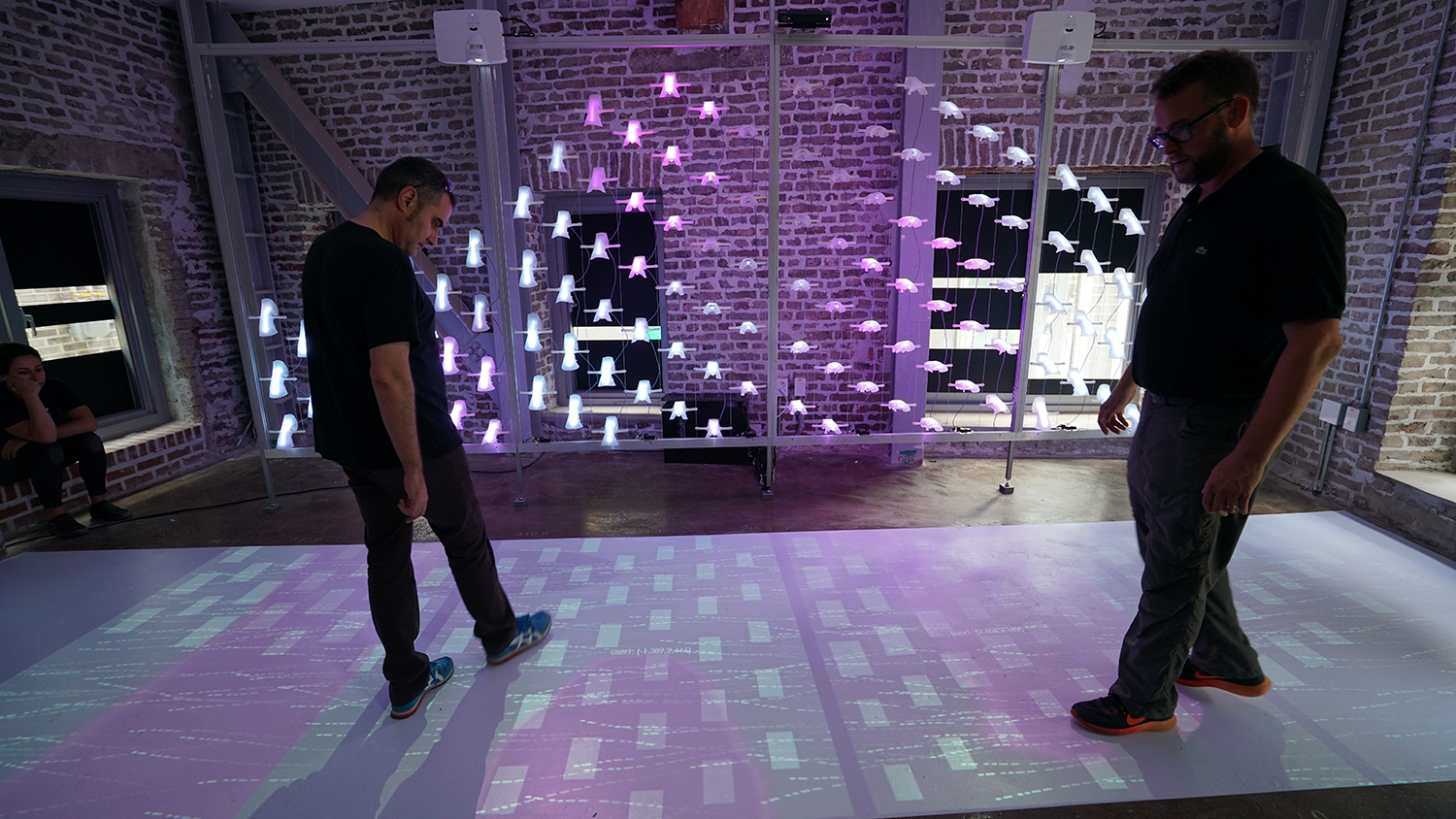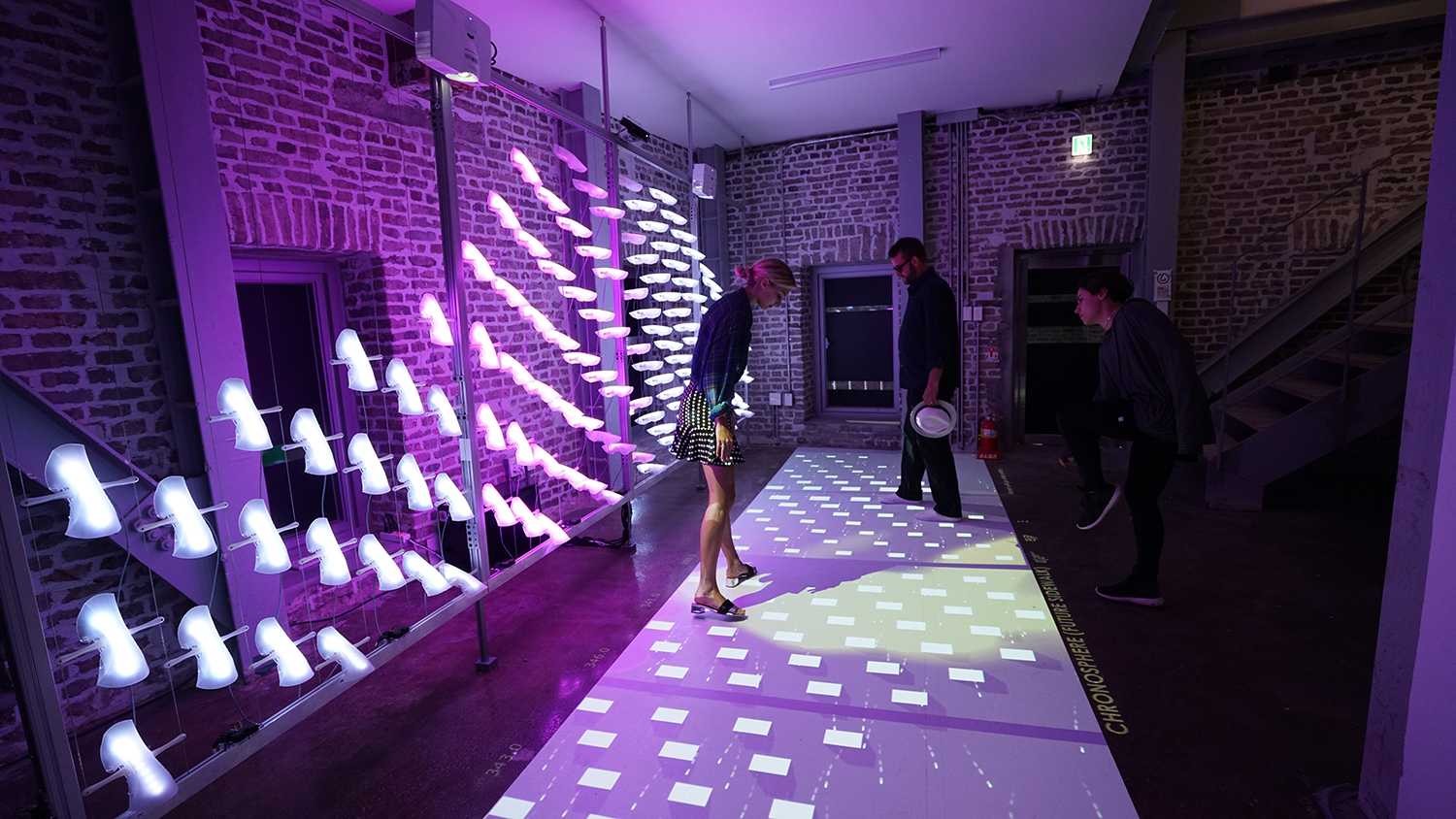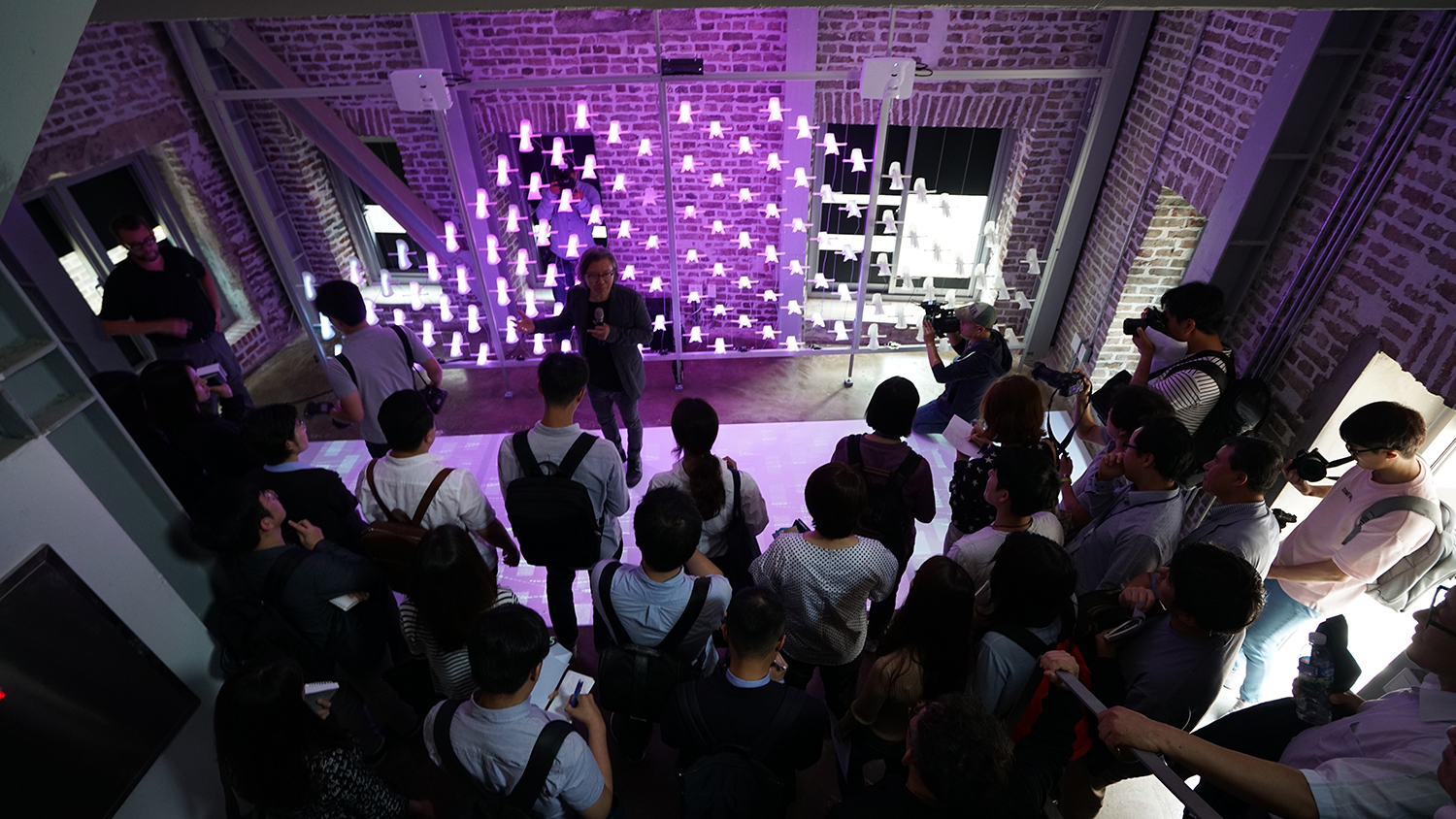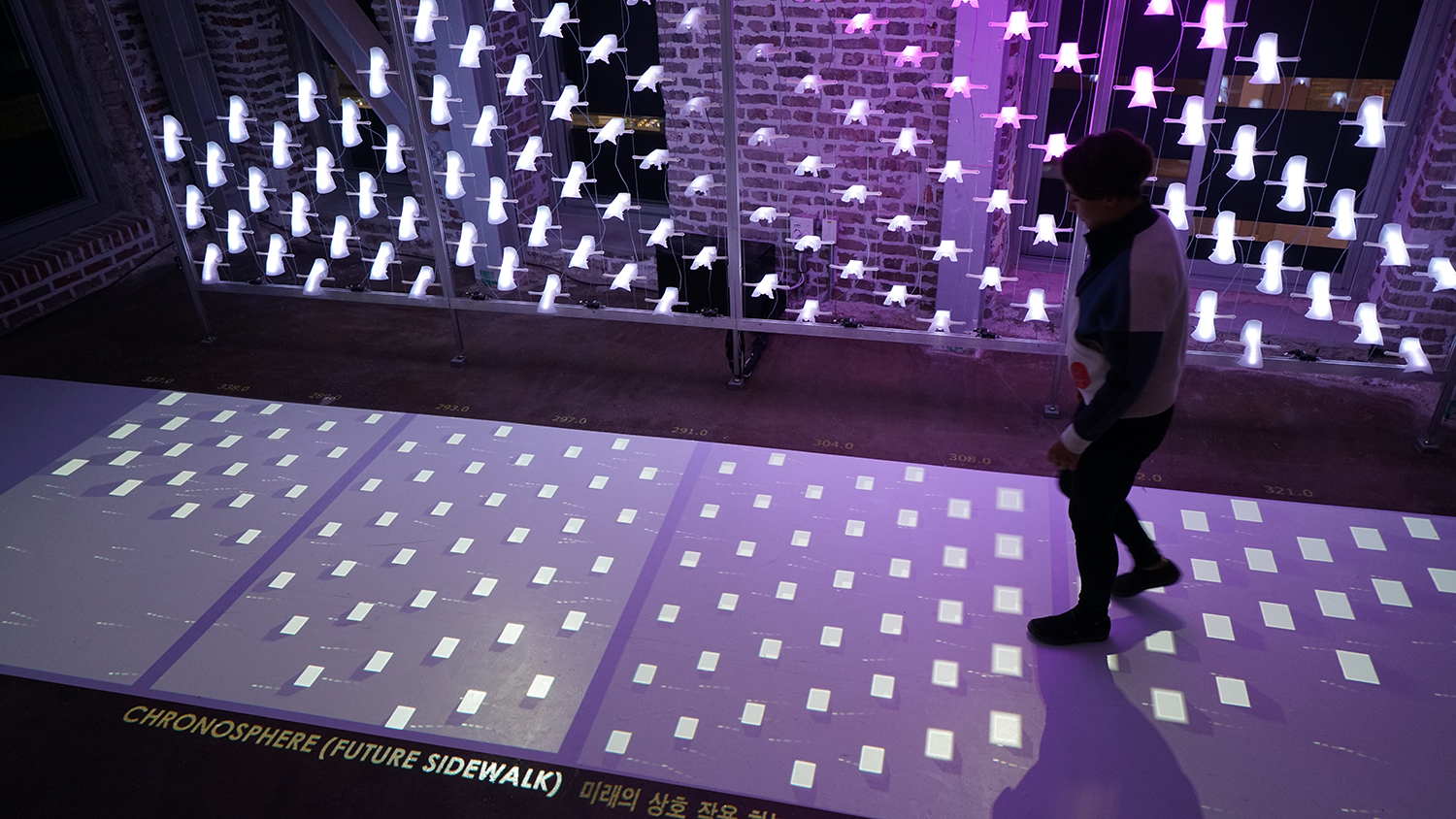SIDEWALK PROTOTYPE AT THE SEOUL BIENNALE OF ARCHITECTURE AND URBANISM
Future Cities Lab had the honor to create a new installation for the 2017 Seoul Biennale of Architecture and Urbanism, directed by Hyungmin Pai and Alejandro Zaera-Polo (curated by Jeffrey S. Anderson), and running from September 2nd to November 5th, 2017. Our installation Chronosphere is a prototype for a new urban sidewalk, an activated surface that synthesizes pedestrian movement and proximity into animated interactions. We relished this opportunity to test out new ideas and technologies as well as the fantastic chance to travel to Seoul to see new works and meet new people.
The Biennale’s focus is on the idea of "Imminent Commons: The Expanded City", nine themes around which cities can begin to examine pressing global concerns and formulate platforms for addressing them. We are participating in the “Sensing” common: looking at the future of sensing in our cities, from the proliferation of cameras and sensors in the public realm to the data being collected straight out of our pockets. We were honored to have a wide range of friends and colleagues around us, including Axel Killian, Mark Wasiuta, Sissel Tolaas and The Living, as well as others participating in the Biennale including Ibañez Kim, Liam Young, Tomas Saraceno, Carlo Ratti, Philippe Rahm, Stoss, Philippe Block and Dirk Hebel, Mitchell Joachim, Brandon Clifford and Wes McGee, Lateral Office, Yusuke Obuchi, and many others.
We initiated our initial research with a simple question: how we can begin to materialize the data the city collects about us? How can we make this data tangible and visceral while leveraging it to enliven public space and social interactivity? We quickly fabricated a system of LED modules and projection mapped surfaces in order to test a variety of sensing methodologies and interactive interfaces. The final piece is an assemblage of 3D printed modules suspended in lightweight aluminum frames with projectors mounted above and a vinyl projection surface below.
Chronosphere interprets it's surroundings though a mixture of IR sensors and depth cameras, reading the location of people moving across it's surface. Each person is assigned a name and color, and as they walk atop the projection surface their movement is reflected as digital avatars of light along the wall, cascading and fusing with one another. On the ground light particles flow around people's feet as animated tiles create an enhanced sense of presence in the space.




